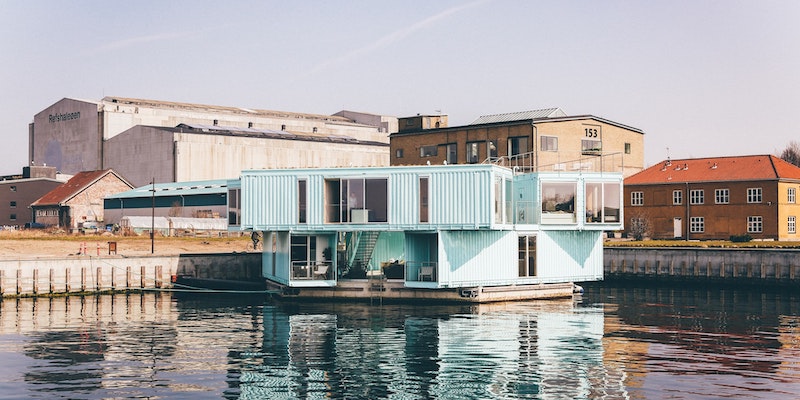7 Things You Need to Know Before Building a Shipping Container Home
Shipping container homes have become increasingly popular over the years, as they offer a fast, green, and sustainable approach to building. Also known as intermodal steel building units (ISBUs), these containers can be used to build an average-sized home with almost no wood, making them a hallmark of architectural recycling.
If you're itching to build a shipping container home of your own, there are a few things you'll need to know before you get started.

It May Not Be Legal
Since acceptance and understanding of the usage of containers for homes is still in its infancy, permits can be hard to come by. Building codes are different in every municipality, and container homes aren't always considered legal structures. Do your research, check your zoning area, and draw up plans for your home. Then, check with officials in the local offices governing your area. If you get the thumbs up from them, chances are your home will pass inspection.
You Might Not Save as Much Money as You'd Hoped
Since shipping containers only cost around $1800-$5000, they're hailed as a low cost option for housing materials. However, there's a great deal of preparation and construction necessary to turn a shipping container into a home. Depending on the cost of materials and labor involved in setting a foundation, cutting frames for doors and windows, insulating, installing utilities, adding a roof, laying flooring, and painting inside and out, you may end up spending as much as you would have on a stick built house.
Getting the Container is Half the Trouble
Unless you live in a port town, the container will need to be transported to you. This can be quite costly - the price will vary depending on how many are being shipped and how far they have to travel.
Inspect the containers in person to assure they are in good shape. Make sure they are structurally sound and not dented, twisted, or corroded. Ask for the containers' age and for documentation. If there is no way to personally inspect the containers before purchasing, ask for high quality photos of the entire structure. Every side, the top and bottom, inside and out.
Cutting Must Be Done Carefully
The body of a shipping container is incredibly strong and made to carry floor loads far greater than what is required for typical home construction. However, when you cut holes for doors and windows, the entire structure is weakened. As a general rule of thumb, whenever you remove portions of the panelized corrugation, you will need to frame the opening with steel. Additional column and roof support may also be necessary, depending on the size of the openings and the weight of the roof. No matter what level of modification you have done to the container, it's strongly advised to have the home reviewed by a structural engineer or architect before moving in.
Insulation is a Necessity
Depending on what you'd like your home to look like, you can choose to insulate the containers on the inside or the outside - but you absolutely have to have insulation.
Steel is an exceptional heat conductor, which means you'll need some serious insulation if you want your home to stay cool. If you live in an especially hot climate (or a climate with hot summers), you might need reflective or ceramic paint on the outside of the container for added protection. In cold climates, insulation is needed for more than just comfort. Failing to insulate allows condensation to form on the interior steel walls, resulting in corrosion or mold.
The Flooring Has to Go
Shipping containers come with half inch plywood floors, but unfortunately, it's one of the first things that has to go. The plywood flooring in shipping containers is treated with insecticides, fungicides, and preservatives in order to protect cargo. These chemicals can be harmful to humans, so it's better to start from scratch than to take a chance.
Your two options are to either remove and replace the floor, or cover the existing floor with an industrial epoxy or polyurethane paint. A 20-foot container will need about five sheets of plywood, a 40-footer will need ten. If you'd rather not replace the flooring, epoxy or polyurethane coating will completely seal the chemicals into the floor, rendering the container safe to live.
You're Probably Going to Want a New Roof, Too
Shipping containers are equipped with super-strong, weather-tight roofs and walls. Unfortunately, the the water run-off design of a single container is negated when two or more containers are joined. This causes water to build up on the roof and cause serious corrosion.
Luckily, a conventional hip roof can be installed quite easily, and comes with the extra advantages of better water run-off, potential rain harvest, solar heat reflection, and shade over the doors and windows.
Shipping container houses are just another ingenious way to conserve natural resources, and to reuse and recycle. With a few added features, you can turn one of these utilitarian steel boxes into home sweet home. Just make sure you know what you're getting into before you get started.




